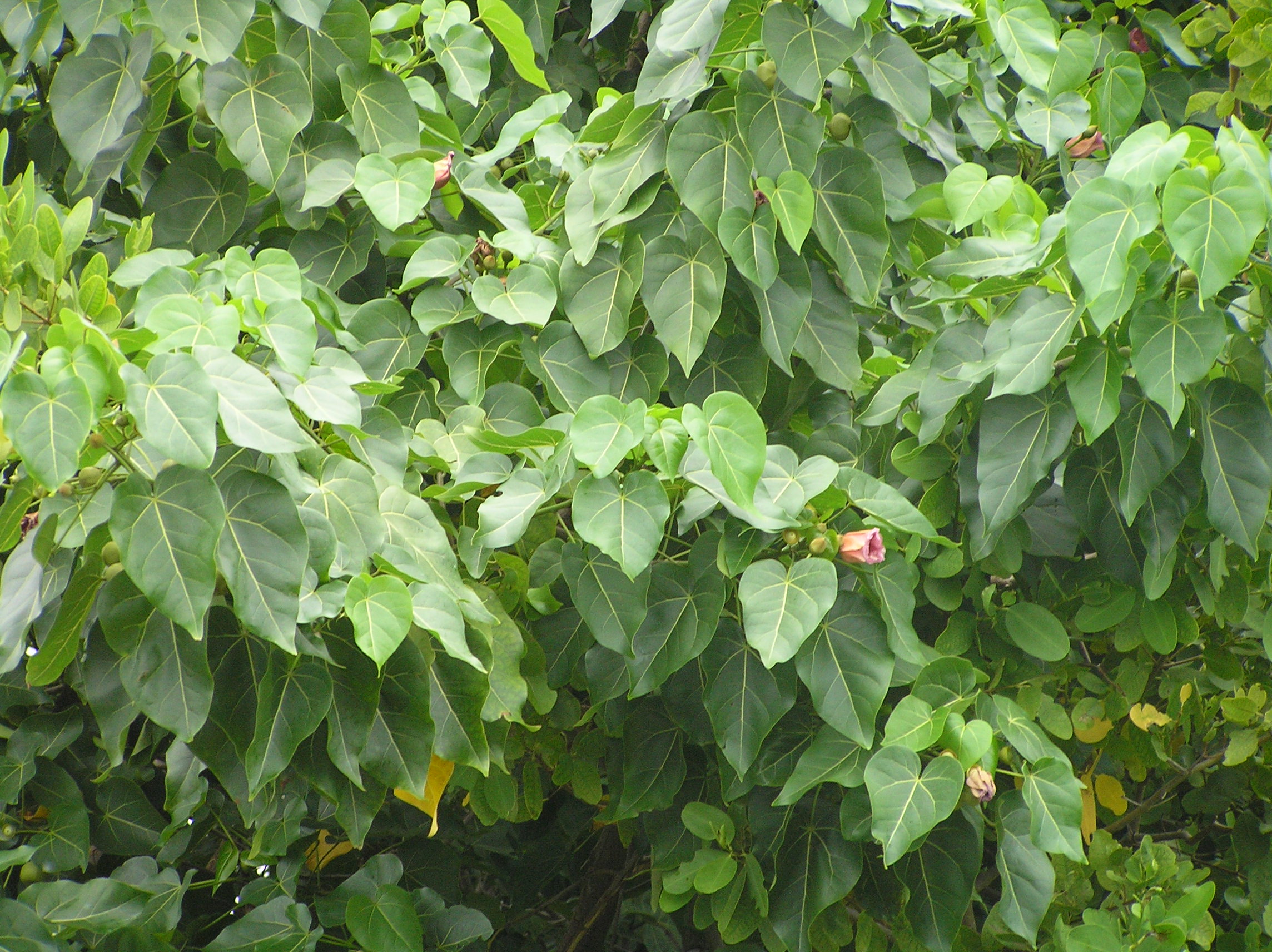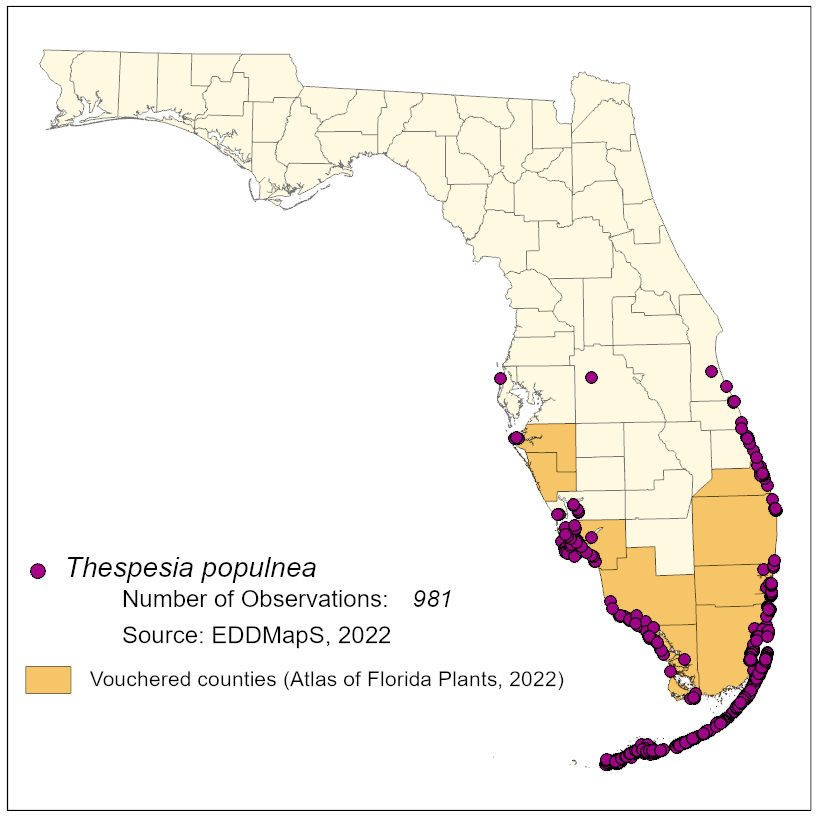Common Name: seaside mahoe
Family: Malvaceae
Common Synonyms: none
USDA Hardiness Zone: 10b-11
Growth Habit: Tree
Origin: Old World tropics
FISC Category: 1
FDACS Listed Noxious Weed: No
Introduction Date: pre 1928
IFAS Assessment:

Evergreen shrub or tree, commonly to 13 m tall, with young branches minutely brown-scaly. Leaves alternate, simple, petioles 5-10 cm long, blades entire, heart shaped, shiny dark green above, 5-20 cm long, usually with 5 main veins from base. Flowers showy, hibiscus-like, single in upper leaf axils, to 8 cm across. Corolla yellow with a red center, turning maroon by nightfall. Stamens united into a column shorter than petals. Fruit a leathery, flattened globose, 5-parted capsule, 4 cm wide, yellow turning black, persisting unopened for a time. Seeds several, hairy, brown.
Coastal habitats of South Florida and the Keys
Flowers and fruits nearly year-round. Fruits and seeds buoyant, adapted to long-distance dispersal bytides and ocean currents. Found only where minimum temperatures are above 35F.

NA
Langeland, K.A., H.M. Cherry, C.M. McCormick, K.C. Burks. 2008. Identification and Biology of Non-Native Plants in Florida's Natural Areas-Second Edition. IFAS Publication SP 257. University of Florida, Gainesville, Florida.
Langeland, K.A., J.A. Ferrell, B. Sellers, G.E. MacDonald, and R.K. Stocker. 2011. Integrated management of non-native plants in natural areas of Florida. EDIS publication SP 242. University of Florida, Gainesville, Florida.